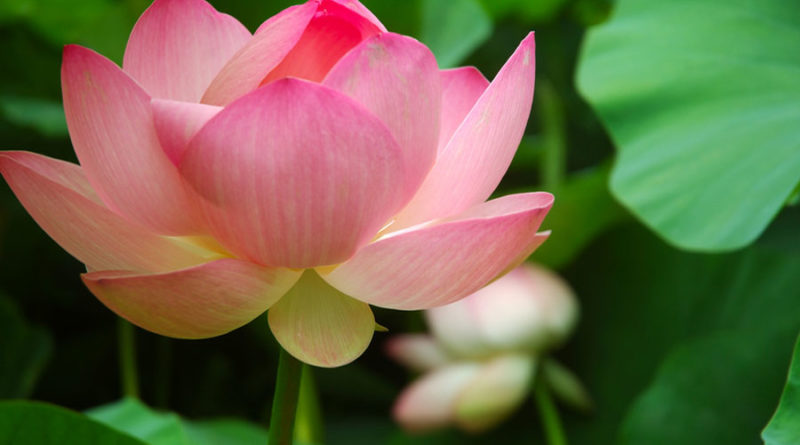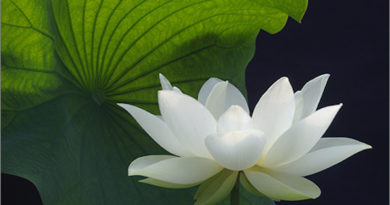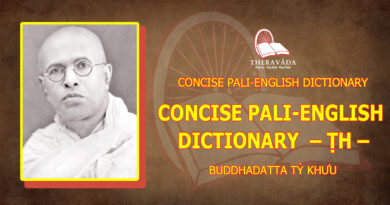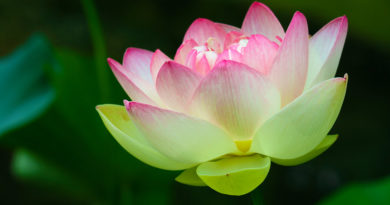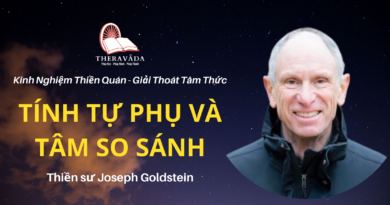DHAMMA RATANA – CHAPTER 9: THE FOUR SUPREME EXERTIONS
DHAMMA RATANA – CHAPTER 9: THE FOUR SUPREME EXERTIONS
In vipassana meditation exertion is an essential factor. How much do you need to exert’? For a sincere meditator, it is to exert until he reaches his ultimate goal that is to be free from apaya. In other words to become a sotapan. In the Padhana Sutta, Lord Buddha had preached the way and method of exertion to attain sotapanna, namely the four supreme exertions. You need to strive hard in order to be a sotapan in this very life. in a way it is to practise these four supreme exertions while engaged in vipassana medita tion. The four supreme exertions are…
1. To exert to prevent those demerits or unwholesome deeds which have not yet happened.
2. To exert to dispel those demerits or unwholesome deeds in, which had already happened.
3. To exert to develop those merits or wholesome deeds which have not yet developed
4. To exert to propagate those merits or wholesome deeds which already developed
Since the listeners of this sermon are well versed in these four supreme exertions, it is required for them to put them into practice.
To Prevent the Demerits
Motto: Exert to prevent the demerits which have not yet happened, so that they will not be apparent.
You have not committed any wrong deeds, however you see and know that the other person committed stealing, killing and other misdeeds.
If there is an epidemic of contagious disease such as cholera, dysentery and small-pox, people take precaution to prevent them. Similarly when you see and know the other person commit misdeeds, you must exert and prevent yourself from doing so. If you practise vipassana meditation, demerits will not happen.
To Discard the Demerits
Motto: Exert to discard immediately the already committed demerits.
Three types of unwholesome deeds.
If a person fails to observe the precepts in one way or the other, he is bound to commit physical and verbal unwholesome deeds.There also occurs repeated desire in your mind when your wishes are not fulfilled, in a way that is developing lobha. You will also be full of worries and anxieties, when something wenL wrong, that is anger. You might want to use force or to accuse and blame someone. However these desires are not overtly manifested as physical action and verbal expression. The practising yogi may have such experience, nevertheless they can dispel them by noting as soon as they arise. There is another type of unwholcsome disposition which has developed and accumulated by the continuous indulgence of them all along the past existences. (anusaya akusala).
So there are three types of unwholesome deeds, one is the physical and verbal unwholesome deeds, second is the repeated desire in the mind and third is the latent unwhole some disposition. The sotapanna magga and phala could be attained if these types of already developed unwholesome deeds are eliminated. It is, therefore, of vital importance to dispel them to become a sotapan.
The poisonous tree
The Athakatha masters cited an analogy of these three types of already developed unwholesome deeds, and a poisonous tree. In the Buddha’s time, there were poisonous trees in the forest. People were afflicted with disease, if they happened to breathe the poisonous air. For that reason, it was important to destroy the tree. It is not only to cut down the tree tops, branches and the trunk, but also to dig out the roots altogether. If not the poisonous tree will grow again when there is enough water and air and is dangerous to the people. The physical and verbal demerits are likened to the tree tops and branches, whereas the trunk is to the unwholesome desire. You can see the tree tops and the branches from a distance distinctly. In the same way, the physical and verbal misdeeds such as killing, stealing, telling lies and sexual misconducts committed by a certain person can be noticed by the other people easily. The person himself knew it too.
A tree trunk could not be judged from a distance, when you come near it, then only you could see how big is the tree-trunk. Similarly the unwholesome desires in one’s mind could not be seen or known to others. The person himself knows it very well when he contemplates.The latent un wholesome disposition is like the roots of a poisonous tree. The root could not be seen even if you were standing on them, for they are covered with earth and buried in the ground. If could be seen only when the earth is removed or they were dug out of the ground. In the same way, the unwholesome latent disposition could not be seen easily. If the roots are not totally destroyed, the tree can grow again at any time when there is sufficient water and air. So also if the unwholesome latent-disposition is not entirely eliminated by vipassana meditation, it could arise time and again, and cause many troubles.The Satipatthana or vipassana meditation is , therefore, the root-destroying dhamma.
Just cutting the tree tops, branches and the trunk is not enough to kill the poisonous-tree. Likewise observation of sila which discards physical and verbal unwholesome deeds, the practice of samatha meditation which dispels the unwholesome desire are not reliable to save one from apaya. Magga and phala will be attained only when the latent defilements are eliminated by the vipassana meditation, if the vipassana meditation is not practised, one could be reborn in apaya.
Motto: To exert to develop merits which are not yet developed.
There might be a few Buddhists who have not yet built monasteries, bridges, or offered robes, alms-food medicine, etc;. If one is unable to build monasteries, bridges, etc:, all by himself, he can share with others. This is how to develop the merits which you have not yet developed. There are quite a number who have not yet practised the vipassana meditation. They should strive to practise it. People should exert to foster the already developed merits. How? Many have offered waso and kathina robes in the past, even then they offer them this year. They are also thinking of offering waso and kathina robes in the coming years. Many have offered alms-food before, nevertheless they offer alms-food again and again.Since childhood many offered flowers, water, light, alms-food throughout their life. That is propagating the already developed meritorious deeds.If you develop the four supreme exertions according to the Buddha’s advice, nibbana will be undoubtedly gained.
To Propagate the Merits
Motto: To exert to propagate merits which are already performed.
To eliminate the already committed unwholesome deeds is the most essential factor in these four supreme exertions. These unwholesome deeds fall into three parts: (1) physical action and verbal expression (2) unmanifested desires and (3) the latent disposition. The unwholesome physical actions and verbal expression are to be expelled by observing sila, such as abstaining from life taking, stealing, sexual misconduct, telling lies, taking intoxicated drinks. A man of moral conduct will never commit these unwholesome deeds as sila prevents him from doing so.
Motto: Physical and verbal demerits are expelled by sila.
The physical actions and verbal expressions are likened to the tree-tops and branches. Therefore sila is regarded as the dhamma which cuts the tree tops and the branches. The unmanifested desires in the conscious mind due to the unfulfilled wishes are likened to the tree-trunk. This is to be expelled by samatha meditation.When the Buddha’s attributes are reflected upon repeatedly, concentration developed. Whereupon the unmanifested desires are eliminated and there arises tranquility in the conscious mind. Thus the unwholesome deeds are discarded.
Motto: Unwholesome deeds developed in the conscious mind is to be expelled by samatha meditation.
Saying prayers, offering flower, water light. ctc:, are counted as samatha practice. By doing so the unwholesome desires are controlled and calmed down for the time being. Samatha meditation therefore, is the dhamma which cuts the tree-trunk.
Those unwholesome deeds accumulated during the innumerable past existences and have developed as latent disposition is to be dispelled by vipasana meditation.
Motto: Unwholesome latent disposition is to he expelled by wisdom.
These latent disposition will be eliminated only when they are noted by vipassana meditation. If they are left unnoted, they will not be discarded. Magga wisdom is the dhamma which can eliminate the latent disposition. Furthermore magga and phala can be attained by vipassana meditation only. Hence vipassana meditation practice, in a way, eradicates the unwholesome deeds. The poisonous tree can grow again if the roots are not totally destroyed, so also ihe unwholesome latent disposition can foster if vipassana meditation is not practised. Thus vipassana meditation is the dhamma which destroys the roots. In other words the practice of Satipathan meditation cuts the roots.
Undoubtedly the poisonous tree will grow again when there is adequate water and air although the tops and branches and the trunk are cut down. Similarly by observing sila and practising samatha meditation, but not vipassana meditation (the root cutting dhamma), one is not certain to be saved from apaya. When the tree roots are entirely destroyed, the branches and the tree trunk will die and they are only useful as fuel. It is, therefore, evident that the highest dhamma is the vipassana meditation, the root cutting dhamma and the most dependable one. Everyone wants to have the best of best. You all now have the best of everything by practising vipassana meditation. However it is important to be under the right guidance.
Out of the three tasks (cutting the tree tops and branches, cutting the trunk and destroying the roots) which is the most difficult task? Of course, to destroy the roots is the heaviest one. A tree has numerous roots. How many roots do we have? Ten roots which have developed from the past existences could not be easily destroyed, unless it is done in the correct way.
Root-cutting Dhamma
According to the Rev: Mahasi Sayadaw’s guidance, there are three ways of practising vipassana meditation, namely (a) sitting practice, (b) walking practice and (c) general noting practice. To contemplate the sitting practice, choose a secluded place, take a posture suitable for a long sitting. Straighten your back, hold up your head, close your eyes and fix your mind on the abdomen. Inhalation will make the abdomen to rise, then note “rising”, “rising”. The abdomen falls, due to exhalation, then note “falling”, “fall ing”. Note ‘rising” from the beginning to the end of its appearance ,without letting the mind to wander off. The form of the body such as legs, hands, head are not to be noted as they are only conventional reality (pannatta). Are the hands, legs, and head pannatta or paramattha? (They are pannatta.) In vipassana meditation, it is to note only the ultimate reality (paramattha) but not pannatta.
Motto: Ignore the conventional terms but observe the ultimate reality.
The abdomen becomes tense and full and rises up; this process is paramattha. Is the “rising” pannatta or paramattha’? It is paramattha. Again it moves and falls gradually. This process is the nature of paramattha. Is the “falling” pannatta or paramattha? It is paramaitha. If the noting is superficial all these processes will not be distinct to the meditator. Concentration will develop only when noting is objective and mindful. The question and answer method of preaching was practised by the Lord to ascertain that the dhamma is perfectly and correctly comprehended by the listeners.
Due to the element of motion the abdomen becomes tense and full, this is known as “rising”, then it moves and falls down, it is “falling”. Note the process of rising and falling presently and precisely. If the mind is not stable by noting two sections, “rising”, “falling”, then note three sections as “rising” ,”falling” and “touching”. Ignore the form of the body as much as possible and try to note the “heat” or the “hardness” caused by the touching of the buttocks with the floor. “Hardness” is the element of existence and the heat sensation is the element of heat. If the noting of three sections can control the mind, keep on noting “rising”, “falling”, “touching”. However if mind still wanders, note four sections, “rising”, “falling”, “sitting”, “touching”. Again do not note the form of the body. Nevertheless note the nature of stiffness of the body caused by the intention to sit, as “sitting” “sitting”.
To perceive the ultimate reality and to ignore the conventional reality is the most essential factor in vipassana meditation. Try and note the present happening as precisely as possible and keep pace with the process of “rising” and “falling”. In vipassana meditation to note paramattha and to be precise on the present happening are the two important factors. Some yogi with some knowledge of dhamma said that they would like to practise the “genuine” vipassana. However, when asked they could not explain what is the “genuine” vipassana. In vipassana meditation, the main theme is to note paramattha and to leave the pannatta alone. Moreover it is essential to note objectively whatever is happening presently; in other words to let your mind dwell on the present happening, the vital factor in vipassana meditation.
6. Walking Practice
There are four ways of noting in the walking practice
1. One noting of each step, such as” left foot forward”, “right foot forward”.
2. Two notings of each movement, such as “lifting”, “drop ping”
3. Three notings, such as “lifting”, “moving”, “dropping”.
4. Six notings, such as “raising”, “lifting”, “moving”, “drop ping”, “touching”, “pressing”.
The three notings is the most practised way of noting in the walking practice. When the foot is lifted, note attentively to perceive the lightness in the gradual upward movement. When the foot is moving forward, note objectively the phenomena of movement; when the foot is dropped, try to apprehend the slow dropping down movement. Whereupon, the nature of phenomena becomes conspicuous to the meditator and he comprehends the ultimate reality, and the forms such as legs, hands and heads are ignored.Remember, it is very important to note paramattha.
People usually noted the forms as “my legs”, “my arms”, “my head”, “his legs”, “his arm”, “his head”, etc: since the time immemorial. Due to this wrong view, there v are misnomer as ‘men’. women’. “1”. “you”. “pretty” “ugly”, dc: Thus attachments and desires developed and we have suffered for uncountable existences. Thereupon the conventional reality is the cause of sufferings, therefore, it is to be ignored as much as possible. The ultimate reality leads to happiness and if you could perceive it distinctly, it will be a foundation for the progress of dhamma.
When the concentration is strengthened by attentive noting, the meditator himself will be aware of the lightness in “lifting”, while contemplating “lifting”, “moving”, “drop ping”. Note the process of lifting objectively and ignore the form of the foot. That is the correct way of noting
In noting “dropping”, heaviness in the dropping foot will become conspicuous, then note it and ignore the form of the foot. The lightness is the element of motion and heat, the heaviness is the element of existence and cohesion. Now the meditator comprehends the four elements that means progress in dhamma. As he is successful in contemplation, he is happy and the stages of insight improved successively. It is important to conceive the dhamma. He is now more interested in meditation and vipassana wisdom develops with each noting. Whereupon there is no more difficulty for the progress of dhamma.
“Dhamma is auspicious for it fosters wholesome deeds and expels the unwholesome ones. Furthermore it is profound and deep; it is also inconcievable. By dint of contemplation; there is improvement in dhamma which leads to freedom from apaya” said the Buddha. The dhamma will not be gained if the noting is superficial. For this reason the right method in vipassana meditation is of utmost importance.
Motto: The apparent lightness is due to the elements of heat and motion
The apparent heaviness is due to the elements of existence and cohesion
The most salient four elements (mahabhuta) are now vividly conceived by the meditator. Before practising meditation, though you have heard and read about them, you did not conceive them. Now you experience them in yourself. It is therefore, regarded as a gain in dhamma.
General Noting
This is essential for the meditators who are striving hard for the attainment of magga and phala. It is to note the “intention” before you act or move, when you want to stand up. If you observe your conscious mind attentively you will realize the intention to stand up. Then note “intend to stand”, “intend to stand”. Then you make effort to push up your body by your hands. Note “standing”, “standing”, when the body slowly moves upwards. “Standing” is a conventional term, the moving process is the ultimate reality or paraniattha. Keep pace with the upward moving process, thereupon you will distinctly perceive the lightness in that upward movement.
The intention to stand is the conscious mind or nama and the act of standing is unconscious matter or rupa. There exist only the pair of nama and rupa. The term “I” is a conventional one used for the convenience’s sake of conversation. In fact there is no “I” or “self’. The erroneous view of “self” and the attachment to the five aggregates are then completely eradicated. Thereupon some of the roots are destroyed since the attainment of the stage of Namarupa pariccheda Nana. The intention to stand is the cause and the standing action is the effect, thus cause and effect are now conspicuous to the meditator, i.e. Paccaya pariggaha Nana. He could decide himself that he has already gained two stages of insight due to noting the “intention”. Is it necessary to ask somebody else?
This procedure of noting the intention may not be clear at first for the beginners. However after some days of mindful practice, it will be quite easy for them. Similarly when noting ” sitting”, just be attentive and then you will be aware of the appearance of intention to sit. Then pote “intend to sit”, “intend to sit”; your body will move downward slowly. Then note “sitting”, “sitting .”Sitting” is a conventional term, the downward movement is the ultimate reality. Try to note this process precisely and you will vividly cognize the heaviness in your body.
The intention to sit is nama and sitting behaviour is rupa. Then you realize that there is just the pair of nama and rupa and the erroneous view of self and the attachment to the five aggregates are dispelled, i.e. Nama-rupa pariccheda Nana. The intention to sit is the cause and the sitting action is the effect, it is Paccaya pariggaha Nana. By noting the intention, you attain two stages of insight. When you clearly understand how to note the intention in “standing” and “sitting” procedure the rest will be easy. If the noting is superficial, you will not do so. We habitually stand and sit without noting for numerous existences. The Buddha’s method of noting, therefore, is the best method. So control your mind.
“The meditator who has attained the Paccaya pariggha. Nana is very much satisfied when he could distinguish cause and effect and at the same time, he develops a firm standing in the Buddha’ Sasana. He is now Sula-sotapan (Junior sotapan) who has no regards for any other wrong beliefs, such as there is no cause for good or bad effect, there is no subsequent existence, etc., Since he could not he influ enced by any of the erroneous beliefs, he is saved from apaya and will have good subsequent births”, remarked the Athakattha masters.
By virtue of controlling the mind, yogi clearly con ceived the fact that good cause leads to good effects and bad cause leads to bad effects. Thereupon if the unwhole some desire arises, he can note spontaneously and dispel it. The non-cause belief and the incongruous creation belief (the roots of a poison-tree) could no longer endanger him. One root, therefore, is destroyed, but there are nine more left. By dint of the Buddha’s method we can destroy the roots. If the top and branches are cut by sila, and the trunk by samatha meditation but the roots are left undestroyed, the poison-tree could grow again, creating dangers to the people. In the same manner, if we could not eliminate the roots, the unwholesome deeds, by vipassana meditation, evidently we will never be free from sufferings.
Once the Buddha was residing at Veluvan monastery, Rajagyo. One day on His alm-round, He saw a female pig at the city gate . There flashed light when He smiled. Ashin Ananda respectfully enquired the reason of His smile. Thereupon the Buddha related the story of the pig. In her past existence, she was a Brahma. The monks were shocked and frightened upon learning that, even a Brahma could be reborn as an animal. The Buddha took the opportunity and preached a sermon. “In the life time of the Buddha Kakusan, this pig was a hen near a forest monastery. While eating the thrown away tit-bits of food, she heard the dhamma recited by the monks.Although she did not understand the dhamma, she was pleased and happy.
“One day she died while listening to the dhamma and was reborn as Princess Upari. She turned into a nun of good moral conduct (sila), the top-cutting dhamma. One day she saw the maggots in the pit and contemplated the samatha meditation, the trunk-cutting dhamma. Thereupon she gained the first jhanic absorption and was reborn in the Brahma World when she died. Next she was reborn as a rich man’s daughter. She indulged in unwholesome deeds and in her subsequent birth, she became a pig which you see now at the gate of Rajagyo City”. Upon hearing the story of the pig, the monks were very much frightened and remoseful.
The reason why a noble Brahma was reborn as a pig is that Princess Upari as a nun observed only sila, the top- cutting dhamma and practised the samatha meditation, the trunk-cutting dhamma, but not the vipassana meditation, the root-cutting dhamma.
Motto: As the latent (Anusaya) kilesa is not eradicated completely
She was reborn as a pig subsequently
The Lord gave a sermon on the spot as He knew that the monks were remorseful and in a condition to gain dhamma. “Oh , my good sons, if only the branches of a tree are cut but not its roots, the tree can grow again if there is enough water and air. Similarly, the physical and verbal unwholesome deeds, likened to the top and branches of tree, are expelled by sila. Likewise the unmanifested repetitive unwholesome dispositions, likened to the tree-trunk is dispelled by the samatha practice. However, if the latent defilements, likened to the roots of the tree, are not eliminated by the vipassana practice, by magga wisdom, there will be repetitive various-sufferings, such as becoming, decay, sickness, death, sorrows, lamentation, etc,. in the coming existences.”
After listening to the dhamma, the monks practised vipasana meditation and gained magga wisdom, which eliminated the latent kilesa completely, like cutting the roots of the tree. They became Sotapans and ariyas and were entirely safe from apaya.
Motto: Without cutting the roots, but just the branches, the tree can grow again.
If the latent kilesa are not eradicated, one will be in the world of miseries again.
When the latent kilesa are eliminated the emancipation from miseries is evident. To eliminate the latent kilesas, develop mindfulness faithfully.
After listening to the Four Supreme Exertions and the top-cutting dhamma, the trunk-cutting dhamma and the root-cutting dhamma as expounded in the Padhana Sutta, may you all be able to practise according to the Buddha’s instruction with diligent contemplation, May you all immediately realize your most aspired Nibbana, the end of all sufferings, by practising with ease.

